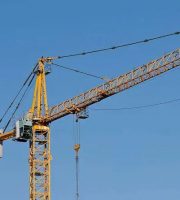The roof support system of a steel structure factory building, although not the main load-bearing component, is an important component connecting the main load-bearing components of the roof. Properly and effectively arranging the support system can ensure that the steel structure factory has sufficient strength, stiffness, and stability. The roof support system of steel structure factory buildings can be divided into upper chord horizontal support, lower chord horizontal support, lower chord longitudinal horizontal support, vertical support, and tie bars..
The transverse horizontal support of the upper chord provides stability for the roof and lateral support points for the main components (steel beams, chords, etc.). It is mainly set between the first column at both ends of the house or the transverse temperature expansion joint section. However, in order to ensure the effective effect of the transverse horizontal support of the upper chord, the spacing cannot exceed 60 meters..
When there is no hanging equipment and the span is not large, the lower chord horizontal support can be omitted..
The function of vertical support is to form a spatial geometric invariant system of tetrahedra composed of adjacent roof trusses and horizontal supports on the upper and lower chords, to ensure the overall stability of the roof. It is set in the middle and at both ends of the steel beam, and the number of settings depends on the span..
In order to ensure the lateral stability of the roof without horizontal support and transfer horizontal loads, tie rods are installed along the longitudinal length of the house at the nodes of horizontal or vertical support. Generally, angle steel or round steel can be used..
The force on the supporting members of steel structure factory buildings is generally very small and does not need to be calculated. The cross-section can be selected according to the construction requirements and allowable slenderness ratio. When the supporting truss of the cross diagonal web system is used as the supporting system, the system belongs to a statically indeterminate system. Under the action of node loads, some diagonal members can be considered to withdraw from work and simplified into a statically indeterminate system, and then the section can be verified to meet the requirements..


